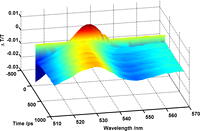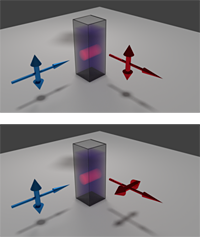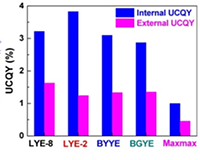Advanced Optical Spectroscopy
In order to design materials and devices for energy conversion applications, a detailed understanding of their photophysical properties is an immense asset. Our group uses a variety of optical spectroscopies to gain such photophysical understanding, thereby driving material and device development.

We use pump-probe spectroscopy to characterize the reaction kinetics in energy conversion materials, be they novel semiconductor materials for photovoltaics or chromophores for light collection or emission. Our Ti:sapphire amplifier system is synchronized with a Q-switched pump laser to allow reaction kinetics to be monitored from hundreds of femtoseconds to several milliseconds without any gaps.
For more information see Ian Howard.

Excited-state dynamics are also studied by various techniques for time-resolving the light emission of samples after impulsive or modulated excitation. For faster timescales we use a Streak Camera coupled with an oscillator and optical parametric oscillator system to provide the excitation light. For longer timescale measurements we use time-correlated single photon counting (TCSPC) and multi-channel scaling coupled with modulated diode lasers to obtain transients from tens of nanoseconds to the millisecond regime.
For more information see Ian Howard.

The photoluminescent quantum yield (PLQY) represents how many photons are emitted per photon absorbed in a luminescent material. Significant effort has been placed in developing an absolute PLQY measurement system for both down-shifting (Stokes) materials as well as up-conversion (anti-Stokes) processes. A wide range of excitation wavelengths are available: 300 – 1000nm using a custom tunable CW source, and 340 – 4000nm using femtosecond pulsed system, as well as diode lasers and LEDs.
For more information see Dmitry Busko.

